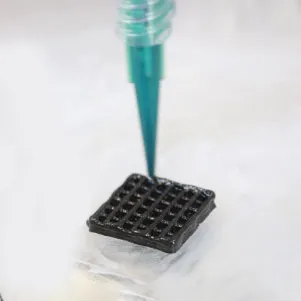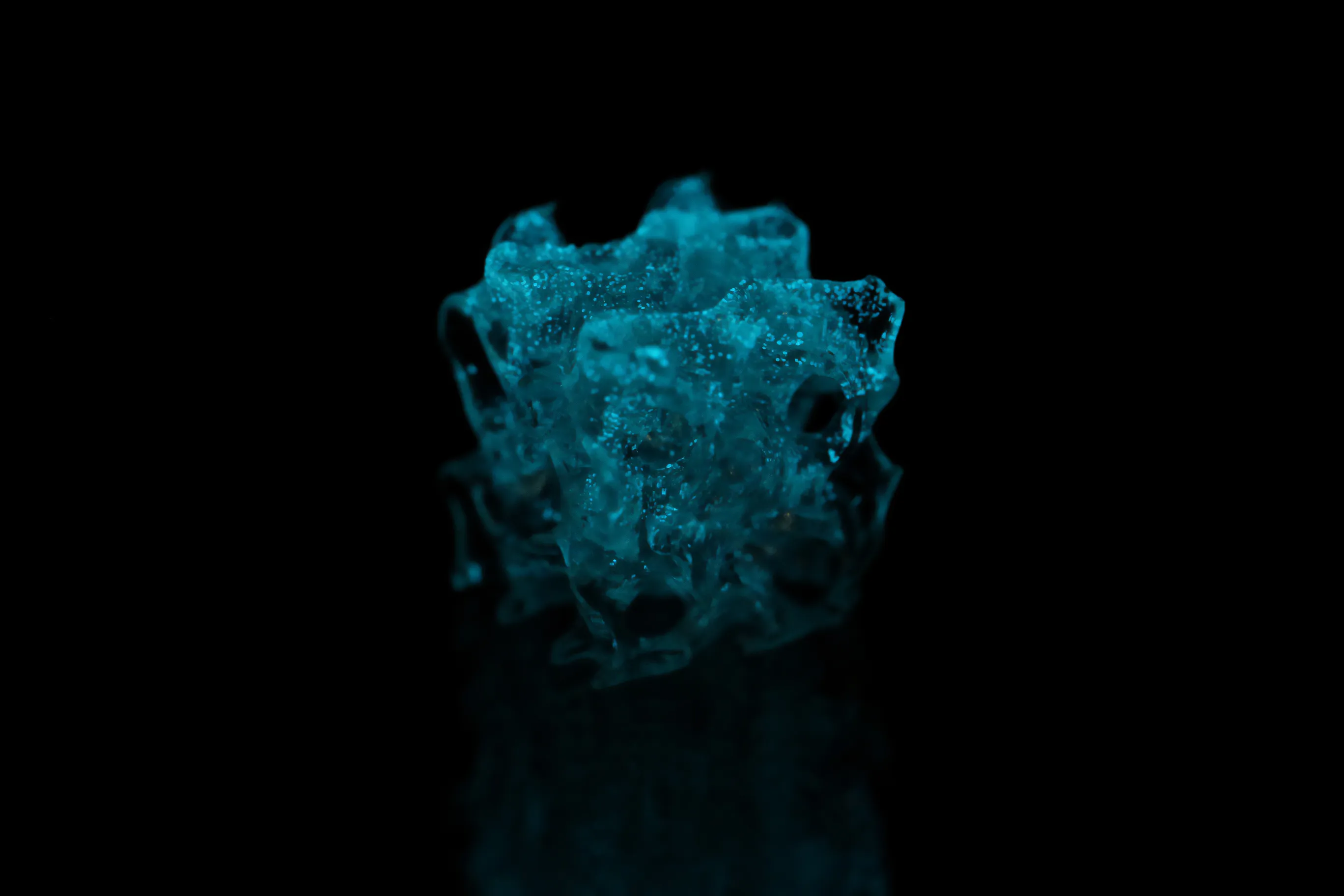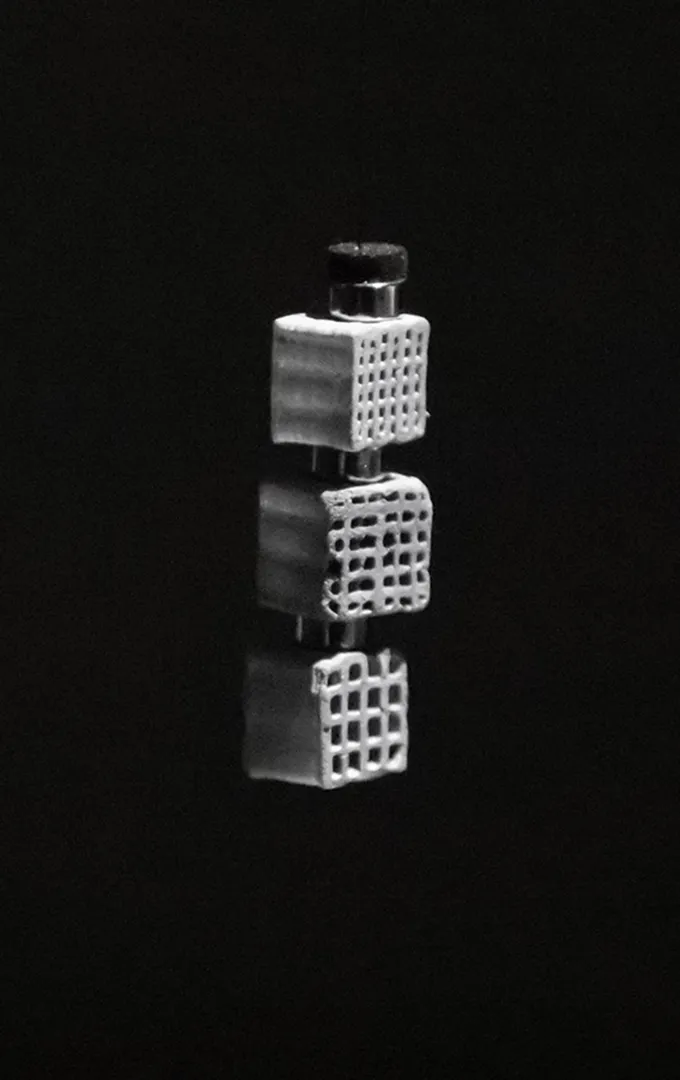
Metal Foams
Lightweight Metal Sponges.
Drawing inspiration from nature, researchers have developed a technique to create Metal Foams. They’re bio-inspired materials that copy the porous structure of bones. Imagine a sponge made completely out of metal. The unique design makes the foams super light, allowing them to float on water. And they're not just lightweight; they're also super strong – you can stand on them, and they won't let you down!
Researchers
Institution
Tags
Properties
What’s so unique about it?
Porous structure
What makes the Metal Foam truly special is its porosity. It imitates biological materials with intelligent and efficient structures, such as bones or bamboo, that combine lightness with strength. It’s also similar to a sea sponge with intricate channels enabling rapid and plentiful water filtration. The material contains numerous cavities, providing opportunities to be filled with various substances like air, water or other liquids. The more porous a material is, the more surface area the material has.
Zoom into the porous structure of the Metal Foams!
Lightweight
The bone-like porosity is key in making this new material so lightweight it can even float on water, with the help of a water-repellent coating. A foam made of steel is not even half the weight of aluminium!
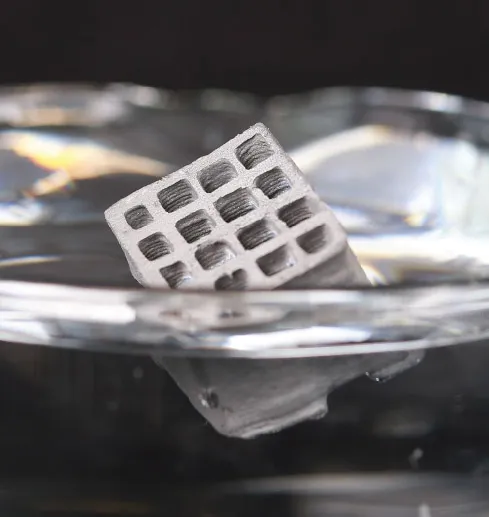
Strong
But porous does not mean brittle! These structures are solid and resistant. Under pressure, the material gets stiffer and stiffer.
Cooling down quickly
Thanks to the material’s large surface area, it cools down very quickly. It works just like a heat sink. The larger the surface, the more heat is released.
Highly absorbent
Metal Foams has the incredible ability to selectively soak up thick, gooey liquids such as oil, just like a sponge.
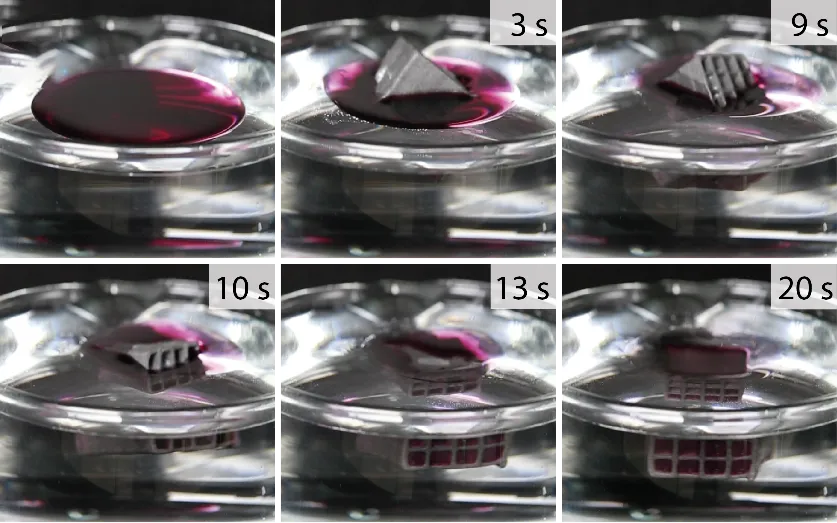
Metal Foams can selectively absorb oil with high viscosity.
Magnetic & electrically conductive
Since the foams are made of pure metal like steel, copper or nickel, they keep their properties like magnetism or electrical conductivity.
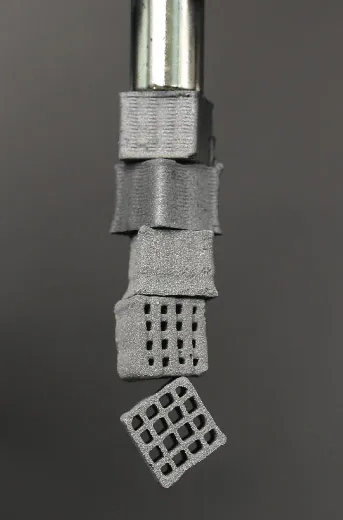
Applications
Passive Cooling, filtering, but what else can it be used for?
Electronic devices consume a lot of global energy – from server farms to our phones to charging our new electric cars. Just the cooling of these devices consumes a notable amount of energy. Metal Foams enable efficient cooling without actively consuming energy. They are ideal passive heat exchangers and do not require fans or air conditioning, all due to their large surface area.
Another advantage of the foam’s porous structures and sponge-like nature is its ability to absorb liquids while maintaining the required strength for practical applications. This means, the foams can also be used for filtration or as a catalyst for producing hydrogen. Other explored applications include the use as electrodes for batteries. What would you use a metal foam for?
Samples of Metal Foams displayed at the REFRESH Design Festival.
Composition
Metal Foams have three-level hierarchical pores, meaning they have interconnected pores with different sizes. This variety of pore sizes works together like a dream team, boosting capillary forces – meaning how fast the foam can soak up liquids.

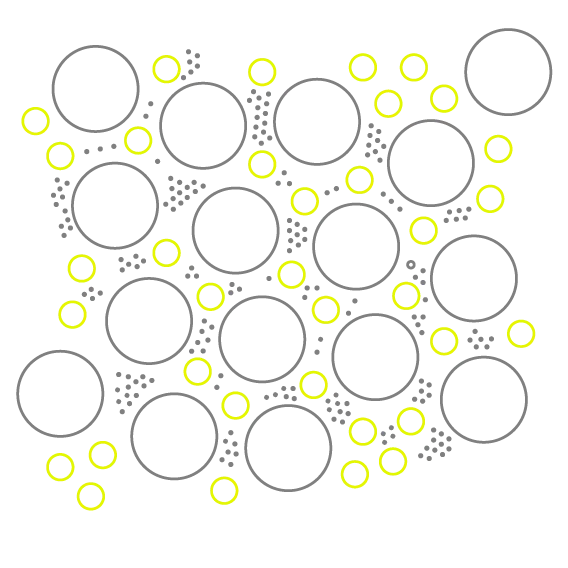
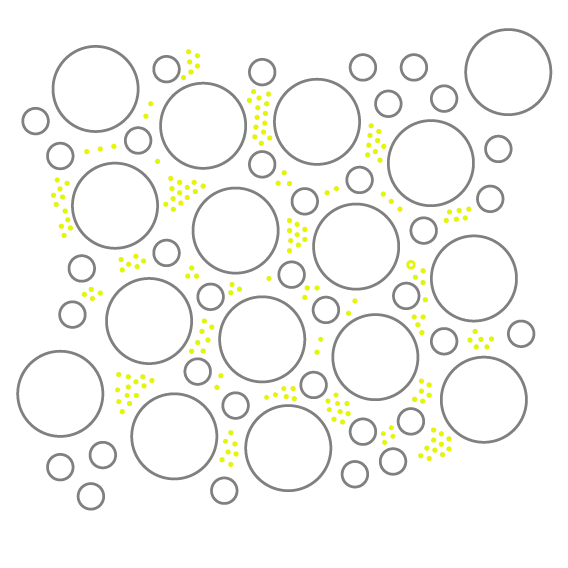
Large and very visible (mm-scale) pores.
Small as a single strand of hair (100 microns) pores.
Even smaller pores (1 micron).
Metal Foams are crafted from ordinary metals like iron, steel, nickel, or copper. What sets this material apart is its distinctive structure.
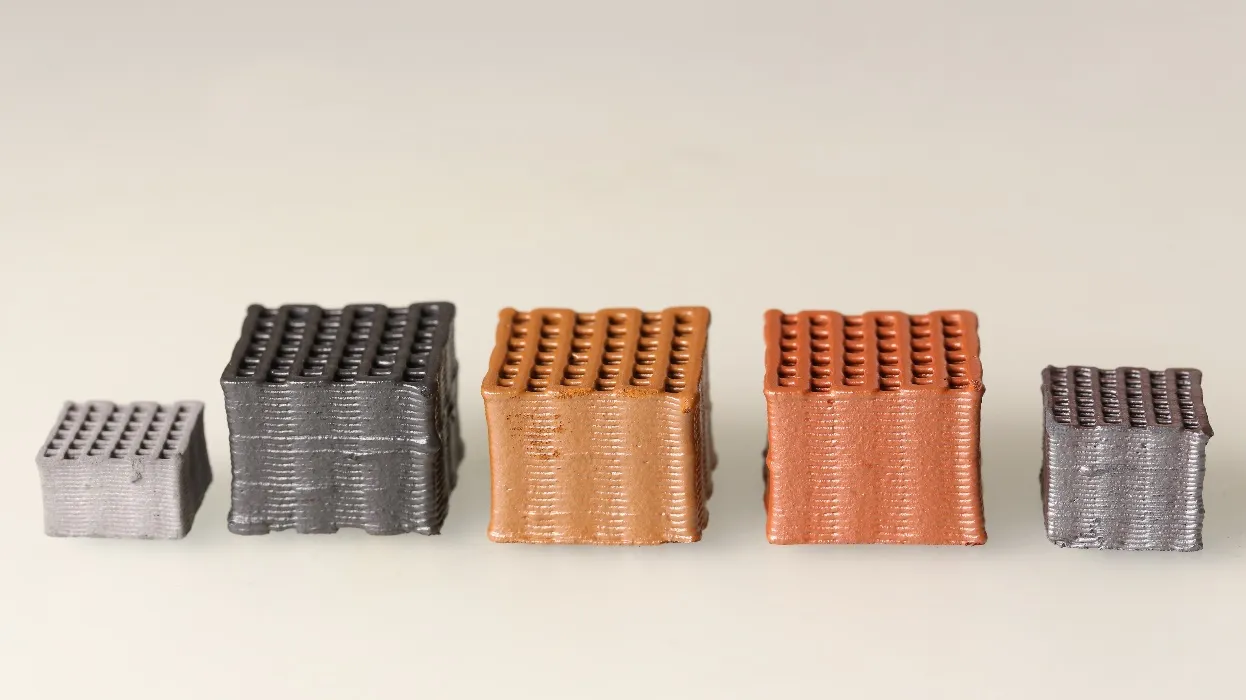
Samples of Metal Foams made with iron, steel, nickel, and copper.
Fabrication
How to make metal porous?
To make these porous metal structures, researchers use something called wet foam. This foam is made with tiny air bubbles surrounded by water with metal particles. The foam is then shaped – using molding, casting or 3D printing – and dried out. Last but not least, the material is heated up to turn the metal particles into solid steel in a process called sintering.
Depending on how the foam is shaped and heated, metal structures with one, two or three levels of pores can be created. Like building a skyscraper of pores, each level adds another scale of holes and even more surface area.
Feedback
Julia wonders what you think about this research. Let her know!

Researcher of Metal Foams
Links
Want more details about the Metal Foams?
Read the Research paper: Hierarchical Porous Monoliths of Steel with Self-Reinforcing Adaptive Properties
Have questions? Get in touch
